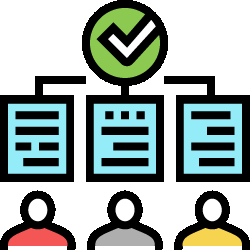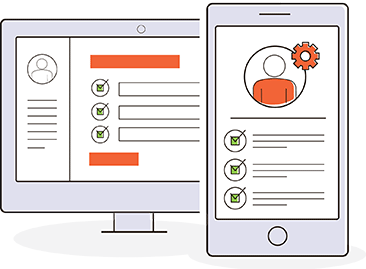Requisition Process Optimization
Automating your requisitions can improve productivity, save costs, and enhance transparency.

Requisitioning is a common practice to simplify and coordinate getting products and services needed for business. Depending on the company, it includes buying, making, planning, storing, and accounting tasks.
What Is a Requisition Process?
A requisition process is used when an employee wants to purchase the business. The process includes the guidelines, steps, forms, approvals, and tracking necessary to acquire the desired purchases.
A Typical Requisition Workflow
While most organizations have a unique flavor to their processes, most requests for purchases follow a similar flow:
- The process usually begins with an employee deciding on an item needed for work. The items can range from office supplies to parts to components for a manufacturing cycle.
- The form requests specific information about your purchase. It asks about the item you want, quantity, price, and why you need it for work.
- The form details money, bidding, contracts, agreements, and how the purchase will be used for business.
- A unique number will be assigned to the requisition for tracking purposes.
- This process is designed to document and provide transparency. The information helps approvers decide if they should authorize the purchase.
- The form requires approval from a manager. Then, it will be sent to other approvers like finance or accounting staff, purchasing department, or senior leadership. During approval processes, approvers may ask for additional information or seek details about need, cost, or business use. In some cases, multiple requisition approvals may be needed before an item can be bought.
- After approval, the employee, department, or finance will enter the purchasing system to buy the desired items. Often, a purchase order is the result of this process. We send the purchase order to the supplier and guarantee payment for the desired items.
Other Requisition Types

When filling jobs within an organization, a job requisition is used. It follows a similar process.
- When a vacancy occurs, it’s an opportunity to determine what to do with the position. Sometimes, the position is clearly defined, and the need is critical. Some job openings may require changes to the position or job description to meet future requirements.
- Employers also use job requisitions for new and temporary positions.
- The person in charge of hiring typically completes an online form. This form includes a new or modified job description, which contains the job title and details about the role. The manager will also recommend banding or grouping the positions for status and salary.
- The supervisor of the hiring manager likely approves a finished form. After that, the form is sent to HR and finance staff. They will then decide the salary range.
- These approvers may also recommend changes to the job description or title. HR and the hiring manager often revise the job description to meet company policy and legal requirements.
- Once the manager approves it, they receive a copy and post the position.
A payment requisition is a request to pay a vendor for goods or services. The requisition confirms that the goods and services were provided accordingly and that the employee authorizes payment.
The payment request usually includes a copy of the purchase order, contract, purchase card authorization, or proof of work. A form will include the vendor's name, address, tax id, payment reasons, currency (for international vendors), and bank details.
The Need for Automation
The consistent process for requisitions is critical for financial operations. That’s why manual processes are not favored. With manual processes, there is unnecessary complexity present that can cause major issues, including:
- Poor Use of Staff. Typing data from invoices and other papers is a time-consuming task. It requires staff to spend a significant amount of time on repetitive and boring activities.
- More Errors. Manual requisitions invite more errors, which result in inaccuracy and more time to try and find and correct miscues.
- Processing Delays. Paperwork can cause delays in getting things like products, paying vendors, approving jobs, and hiring employees.
- Document Control. Manual work makes it more likely that original documents are misplaced, misfiled, or lost.
- Reporting Inaccuracies. Without accurate data, it takes longer to create important reports for understanding finances and making informed choices.
Workflow automation solves all those problems. With a better, technology-driven requisition process, your company will:
- Save costs
- Eliminate paperwork
- Allow employees to work on more critical tasks
- Boost productivity
- Create an audit trail
- Improve customer satisfaction and retention
- Improve vendor relations
- Accelerate hiring
- Drive transparency throughout the operation
Summary
Overall, implementing technology-driven purchasing processes brings numerous benefits to companies. It saves costs by reducing errors and inefficiencies, eliminates paperwork, boosts productivity, and improves customer satisfaction and retention. Additionally, it enhances vendor relations, accelerates hiring, and drives transparency throughout the operation. In today's fast-paced business environment, embracing automation is essential for companies to stay competitive and achieve better outcomes.
Interested in Automating Your Requisitions?
Check out our Automation Resources or schedule a demonstration.

